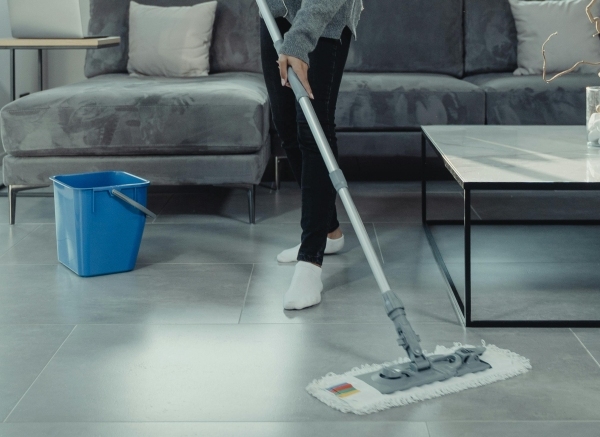Choosing the right colors for your home is more than just an aesthetic decision—it’s an emotional one too. The hues that surround us can significantly impact our mood and well-being. While some colors can invigorate and inspire, others might unintentionally bring about feelings of sadness or gloom. Let’s explore ten color choices in home design that, surprisingly, can have a downcast effect on your spirits.
10. Dull Beige Overload

While beige is often chosen for its neutrality and ability to blend with various décor styles, an excessive use of this color can render a space bland and uninspiring. Too much beige can create a monotonous environment lacking in personality, failing to uplift the mood or stimulate positive emotions. Interestingly, beige can absorb light rather than reflect it, subtly dimming the brightness of a room. To avoid this, consider adding pops of vibrant colors through accessories or artwork to bring life into beige spaces.
9. Overpowering Burgundy

Burgundy, with its rich and intense hue, can add elegance when used sparingly. However, when it dominates a room, it might create a heavy atmosphere that feels oppressive. The deep red undertones can be emotionally overwhelming, potentially leading to melancholic feelings. A little-known tip is that burgundy can significantly alter perceived room size, making spaces feel smaller. Balancing burgundy walls with lighter furnishings or incorporating it as an accent color can prevent the gloominess it might otherwise introduce.
8. Deep Purples Everywhere

Dark purple has long been associated with luxury and sophistication, but an overabundance can tip the scale toward overwhelming and somber. This regal color absorbs light, making spaces feel enclosed and potentially evoking feelings of sadness. Interestingly, in color psychology, purple combines the stability of blue and the energy of red, which can be conflicting when overused. To maintain harmony, pair deep purples with lighter shades or reflective surfaces to introduce balance and lightness into the room.
7. Heavy Olive Greens

Olive green can bring a touch of nature indoors, yet certain shades may appear drab or muddy when used excessively. This can create a dreary ambiance that feels dated or uninspiring. What many don’t realize is that lighting plays a significant role in how olive green is perceived—it can look earthy in sunlight but murky under artificial lighting. To prevent a melancholic mood, mix olive green with brighter, more vibrant colors or use it in well-lit areas where its earthy qualities can be appreciated.
6. Washed-Out Pastels

Pastels are often chosen for their soft and soothing qualities, but when they become too washed-out or paired with gray, they can lack energy and warmth. This can lead to a lifeless atmosphere that may dampen spirits rather than lift them. An interesting insight is that pastels with slightly warmer undertones can retain their gentle appeal while adding a subtle vibrancy. Incorporating textures and patterns alongside pastel colors can also enhance the space, preventing it from feeling emotionally flat.
5. Muted Brown Tones

While browns can add a sense of stability and comfort, overuse of muted brown shades might make a room feel uninspired and outdated. This can negatively impact one’s mood, leading to feelings of boredom or sluggishness. Surprisingly, too much brown can also absorb natural light, diminishing the room’s brightness. To invigorate a brown palette, introduce varied shades and materials like wood grains or metallic accents to add depth and interest, breathing new life into the space.
4. Stark White Interiors

Crisp white interiors are often associated with modernity and cleanliness, but an all-white space can sometimes feel sterile and impersonal. This starkness may lead to feelings of isolation or emotional emptiness. It’s a lesser-known fact that pure white can reflect too much light, causing visual discomfort. Adding subtle variations of white, such as cream or ivory, incorporating textures, or introducing natural elements like plants can soften the effect and create a more welcoming environment.
3. Too Much Black

Black can exude elegance and sophistication, but too much of it can create a heavy, oppressive environment. Overwhelming black interiors may contribute to feelings of sadness or gloom, as the color absorbs light and can make spaces feel smaller and confined. Interestingly, an abundance of black can also hinder creativity by creating a visually closed-off space. Balancing black with lighter colors, reflective surfaces, or ample lighting can maintain a sense of openness and prevent the room from feeling somber.
2. Dark and Dreary Blues

Blue is often associated with calmness and serenity, yet deep, dark blue tones can have the opposite effect when overused. Such shades might evoke feelings of melancholy and make spaces feel cold and uninviting. What many might not know is that dark blues can slow down metabolism and reduce appetite, which might not be ideal in dining areas. To keep blues uplifting, opt for lighter shades or balance dark blues with warm accents and cozy textures to create a more inviting atmosphere.
1. Overwhelming Gray Spaces

Gray has become a popular neutral in modern design, prized for its versatility. However, an overabundance of gray can create a dull and depressing atmosphere due to its lack of warmth and vibrancy. This might lead to feelings of sadness or even lethargy. Studies have found that gray is the color most associated with feelings of depression and loneliness. To counteract the potential gloom, incorporate varying shades of gray mixed with brighter colors, add colorful accessories, or introduce warmer tones like soft yellows or blush pinks to enliven the space.


